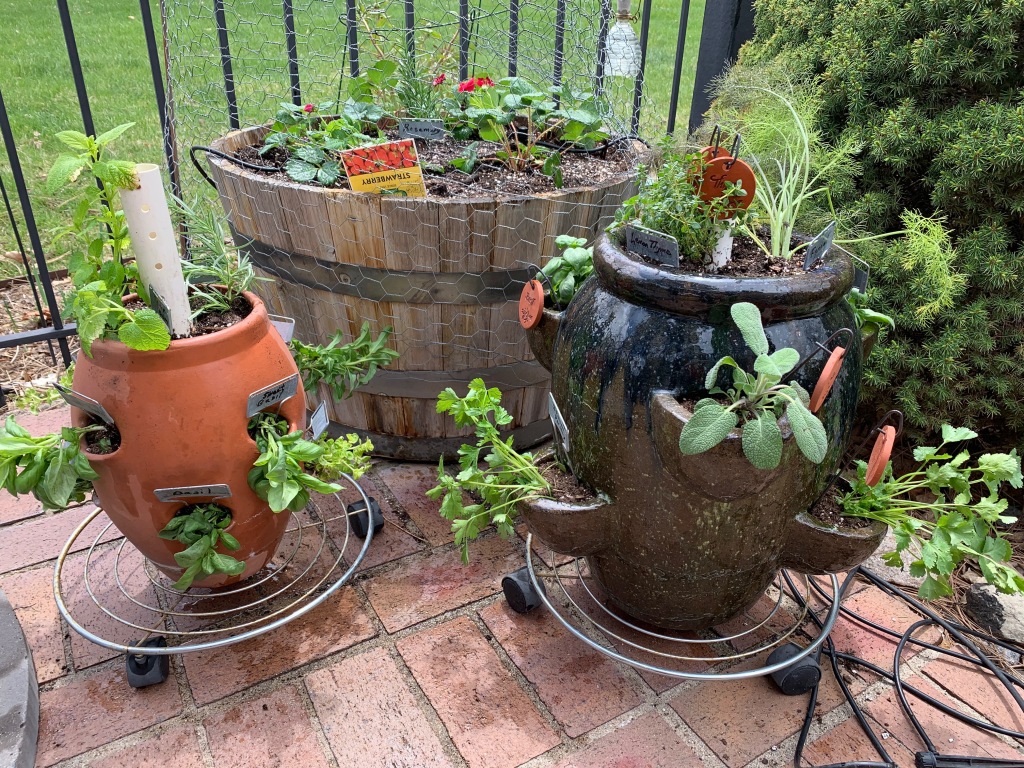By Terry Deem-Reilly, CSU Extension – Denver County Master Gardener since 2003
Cultivating a vegetable garden this spring was certainly a challenge – we had late snow, followed by almost constant rain and, finally, some killer hailstorms. Seeds and seedlings were drowned or drifted into neighboring patches of soil and planting was delayed due to soggy soil conditions. Then cool temperatures and heavy rains required us to protect heat-lovers like tomatoes and peppers and stunted their growth.

As I write this, we’re experiencing some typical July heat while forecasters are predicting a temperature dip that will lower temperatures to a more comfortable level. We can look forward to an abundant second harvest in September and October if we take advantage of better planting conditions this month.
WHEN AND WHAT SHOULD I PLANT?
Before answering the questions of when and what to plant, determine this year’s anticipated first frost date. Do this by counting backward from the number of days or weeks to maturity for each plant species. This will give you the date on which seeds must be planted.
Find the first 2023 frost date for your city on the website of the Old Farmer’s Almanac. This resource estimates Denver’s first frost to occur on or about October 6th , however this is only an approximation – keep up with local weather predictions as summer turns into fall. And remember that we can be flexible, thanks to plant protectors and moveable containers!

Next, decide what to plant. The Denver Urban Gardens site features a guide to vegetable planting for commonly grown vegetables. It shows the recommended number of weeks (not days) to plant before the first frost. The column headed “fall planting” has the information to reference for the late gardening season. Note that we’re inside of or past the optimal seeding date for a number of these plants. Given this, consider using vegetable starts instead of seeds, and/or grow in containers that are easy to move or cover as the first frost approaches.
If seeing drop-dead dates for planting better suits your style, check out the ‘Colorado Vegetable Planting Calendar’ on the Asia Farming website.

Before heading to the nursery –- and certainly before starting to plant –- take a look at Pueblo County Extension’s publication, “Late Summer and Fall Vegetable Garden Planting” for advice on plant selection and improving the tilth of soil that’s been used to grow the summer crop.
If you like perennial herbs – decorative or culinary –- look for them in pots when you’re out and about looking for vegetable starts and seeds. Herbs like winter savory, lavender, and thyme will overwinter and, in some cases, remain green for cold-weather interest. Mulch well and water regularly until the soil freezes in late November to promote good root growth for a fast start in the spring. Perennial herbs in small containers can be brought inside during the winter and returned outdoors to perk up the garden as soon as nighttime temperatures warm to a safe level in spring. This website lists some perennials that survive Zone 4 and 5 winters and popular annual herbs for fall planting.
It’s not quite time to plant garlic, but if it’s on your fall schedule, the sheer number of available cultivars and flavors requires researching possibilities and ordering bulbs NOW. Here’s a good article about growing this crop in Colorado, featuring some well-performing varieties. Local nurseries are or will soon be stocking garlic bulbs but consult some mail-order sources for the more exotic types. And for everything essential to know about growing garlic in our climate, check out the Master Gardeners’ September 2020 blog post “‘Growing Garlic in Colorado.”’
PLANNING FOR DISASTER
Inevitably an unexpected run of bad weather will occur in September or October: a hard freeze, rains that drown seeds and seedlings, even a heavy wet snow that brings the growing season to a screeching halt by snapping plant stems in two and withering tender foliage. We can minimize this damage by using a few effective tools:
- Row covers and frost blankets (sheets from the linen closet will work in a pinch)
- Anti-freeze bags (these come in many different sizes and are great for bushy plants)
- Cold frames (require advance construction but are handy year-round)
- Morning watering when frost is expected that night (hydrated plants are more resistant to frost damage)
Good luck with your late-season veggies! As always, please contact the Denver County Extension with your gardening questions.






































